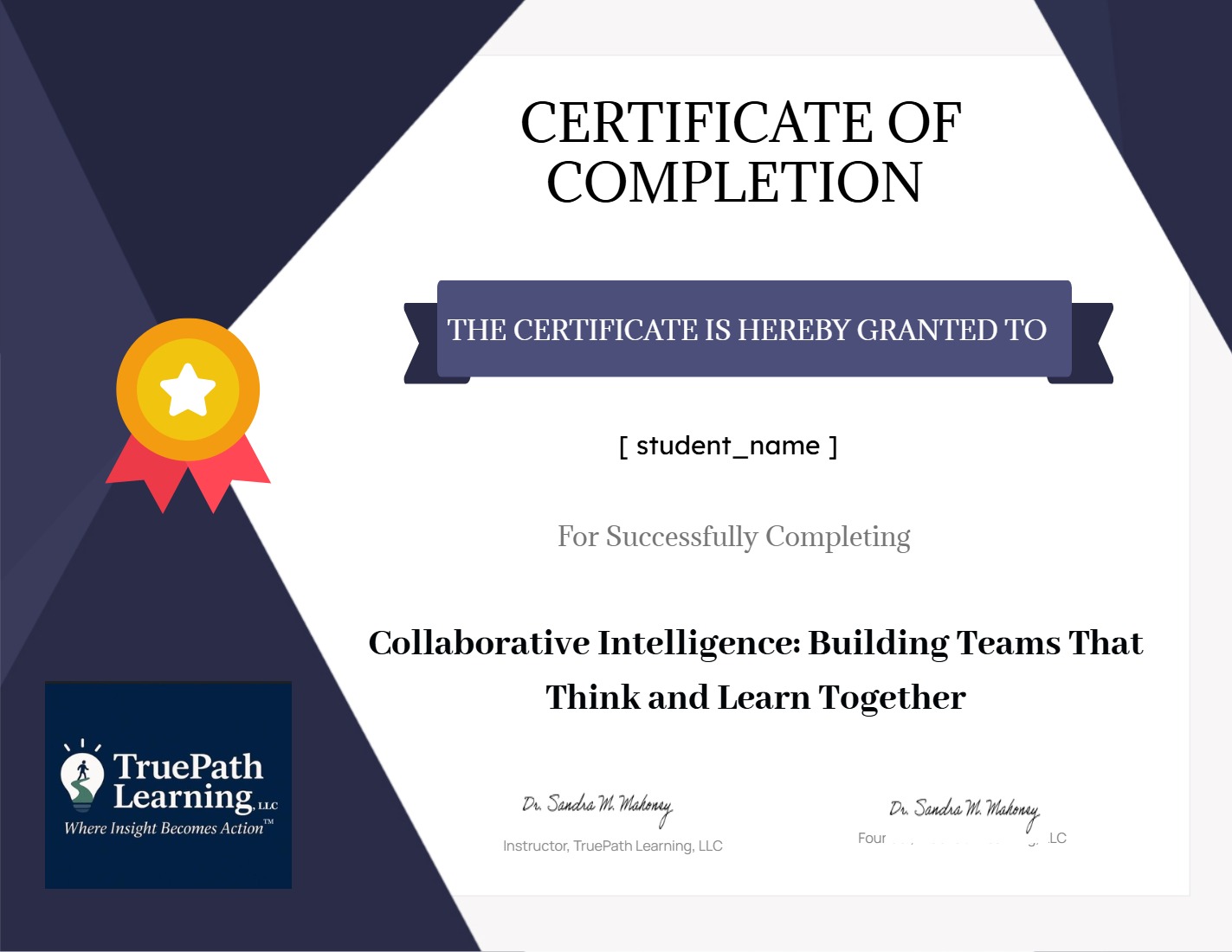About Course
Overview:
This course helps leaders strengthen collaboration by developing teams that think, learn, and grow together. Participants explore the foundations of trust, psychological safety, and reflective dialogue while practicing facilitation strategies that build shared purpose and accountability. By the end, leaders will design an action plan to cultivate collaborative intelligence in their own organizations — where insight becomes action.
Learning Objectives:
By the end of this course, participants will be able to:
-
Define collaborative intelligence and its relevance to leadership and innovation.
-
Diagnose team strengths and challenges using systems and trust frameworks.
-
Foster psychological safety and equity of voice within teams.
-
Facilitate productive feedback and reflection cycles that drive learning.
-
Create structures for continuous team learning and improvement.
-
Develop an action plan to embed collaborative practices in their leadership context.
Key Topics:
-
Collaborative intelligence and collective efficacy
-
Feedback architecture and meeting design
-
Psychological safety and engagement strategies
-
Cross-functional communication tools
-
Adaptive performance and continuous learning models
Format & Delivery:
Interactive online modules with team-based simulations, downloadable facilitation templates, and real-world case studies.
Course Content
Collaborative Intelligence Course Overview
-
Copywrite and Usage Guidelines
00:32 -
Collaborative Intelligence Course Overview
03:00
Module 1 — The Foundations of Collaborative Intelligence
Module 2 — Building Psychological Safety and Trust
Module 3 — Communication Systems and Feedback Architecture
Module 4 — Collaborative Problem-Solving and Creative Thinking
Module 5 — Accountability, Performance, and Continuous Learning
Module 6 — Pulling It All Together: Leading Learning Teams
Final Section – Summary, Evaluation and Certificate
Earn a certificate
Add this certificate to your resume to demonstrate your skills & increase your chances of getting noticed.

Student Ratings & Reviews

